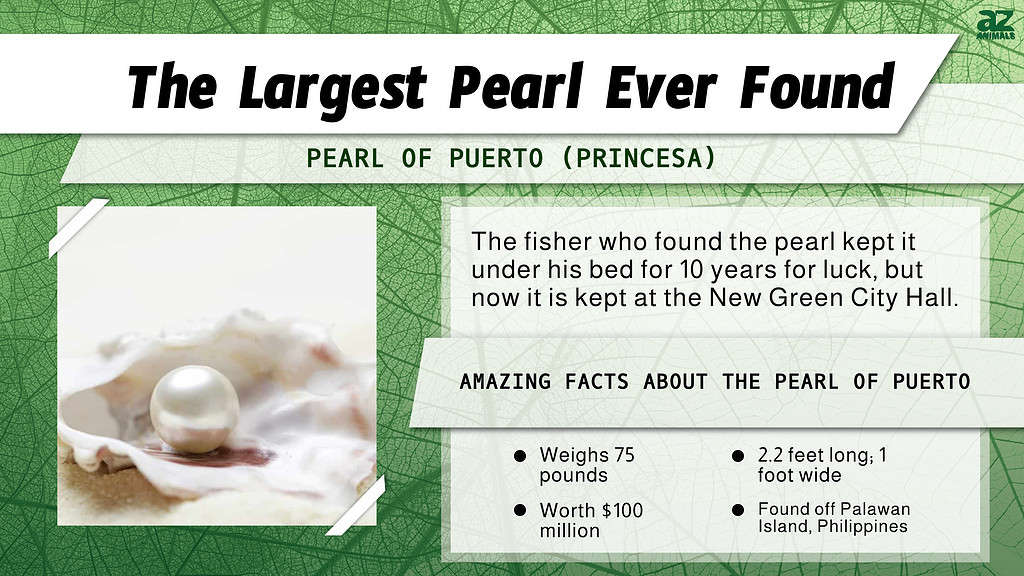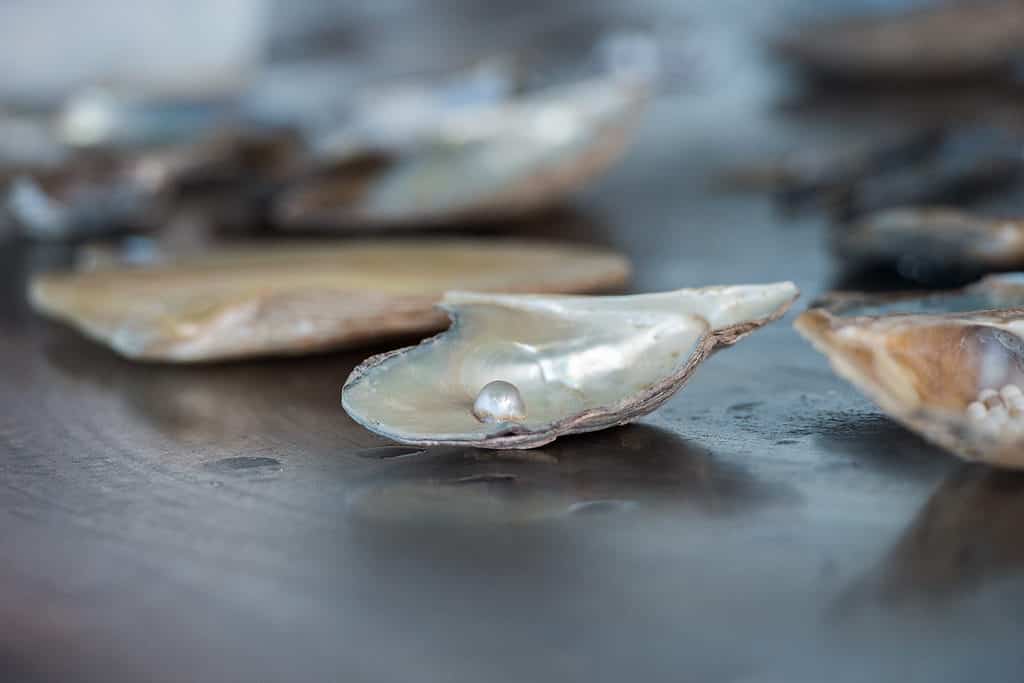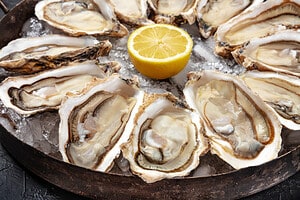The chemicals and methods to make “imitation pearls” from substances such as glass or coral were unavailable until modern times. If you wanted pearl jewelry, real pearls had to be found in the sea and collected naturally; hence the term “natural pearls.” Of course, natural pearls are very valuable and demand continues for them.
The Largest Pearl Ever Found: Discovery

The biggest recorded natural pearl in the world is the Pearl of Puerto. This pearl is often known as the Pearl of Puerto Princesa. A Filipino fisherman discovered it in the sea off the Philippine Islands. It weighs 75 pounds and is 2.2 feet long and wide.
If what has been stated about its formation inside a huge clam is true, it would probably be worth more than $100 million! A man from Puerto Princesa on the island of Palawan reportedly discovered it nearly 20 years ago while out fishing, based on an article in the neighborhood Palawan News.
He had to dive down to free the anchor from his boat since it had become stuck on the enormous clam. The fisherman kept it as a symbol of luck even though he was unaware of its potential value.
He gave it to his aunt Aileen Cynthia Maggay-Amurao, a tourist officer employed by the local government, when the time came for him to relocate to another area of the province. She gave the pearl to mayor, Lucilo R. Bayon, with her nephew’s consent, so that it might become a new city attraction for tourists. It is currently exhibited in the atrium of Puerto Princesa’s New Green City Hall.

Aerial view of the city of Puerto Princesa on the island of Palawan. Philippines.
©Alexpunker/iStock via Getty Images
Pearl Farming in the Philippine Islands
There was also an old trading route for pearls called the Pearl Road, where traders from throughout the world, mainly Chinese, would travel to barter with nomads for pearls. The most valuable pearl oyster species, Pinctada maxima, is raised today for its ability to produce beautiful live natural gems.
Natural pearls and shells are traditionally found in the Philippines. The diving prowess and hunt for rare natural pearls of the Badjao people are well renowned. Cultured pearl farming is significant right now.
It is well known that the Philippines are a significant supplier of golden South Sea pearls. There are also white South Sea pearls created. On the island of Palawan, there is a large concentration of pearl farming. It sounds like the Filipino fisherman was quite lucky to find the massive gem!

A pearl farm in operation in Ha Long, Vietnam.
©FiledIMAGE/Shutterstock.com
Largest Pearl Ever Found: How Experts Price Pearls
Size, form, coloration, brilliance, surface integrity, and nacre quality are the factors that influence a pearl’s total worth, whether it is a natural or cultivated pearl or a component of pearl jewelry. Larger pearls are much rarer and more precious than smaller pearls of the identical type when all other value criteria are equal.
The reason the 75-pound pearl is worth so much is obvious in light of this! Another factor to think about is the shape. The most challenging shape to develop is the round shape, which is also the rarest and, generally speaking, the most expensive shape of a cultured pearl.
However, there are several exceptions. Pearl lovers also value well-formed cultured pearls with unusual shapes like baroque, pear, or oval. Pearls come in a wide variety of colors, both natural and manufactured. There are chilly colors like blue, green, and violet and warm colors like yellow, red, and pink.
The tones of pearls fluctuate greatly from light to dark shades. Pearl hues typically have a subdued, delicate feel. Nacre quality and luster go hand in hand. It is safe to presume that the nacre is thin if the nucleus is visible through the nacre or if the pearl has a bland, powdery look. This impacts both the pearl’s luster and durability.
Largest Pearl Ever Found: How Are Pearls Made?

Mollusks produce pearls to defend against irritants that seep into their soft tissue.
©Andrea Izzotti/Shutterstock.com
Although technically, any mollusk, such as an oyster, mussel, or clam, can produce pearls, only a few freshwater mussels and saltwater clams are employed to create cultured gem-grade pearls commercially.
Scientists might gain additional insight into the biological mechanism by which mollusks produce these brilliant gems and how they can evolve as Earth’s oceans warm by studying and collecting nacreous pearls.
Mollusks produce pearls to defend against irritants that seep into their soft tissue. They accomplish this by ejecting successive layers of shell substance. Nacre, or mother of pearl, is this substance for several animals. The form of rind known as nacre gives pearls their beautiful luster. But there’s another explanation for why it’s unique.
The material’s composition, which combines biological fluids with the mineral aragonite based on carbon, gives it tremendous strength. Natural pearls are extremely rare, even though this brick-and-mortar mechanism has existed for at least 200 million years. So, to produce more pearls for the gem market, individuals currently grow pearls.
The photo featured at the top of this post is © Andrea Izzotti/Shutterstock.com
Thank you for reading! Have some feedback for us? Contact the AZ Animals editorial team.






